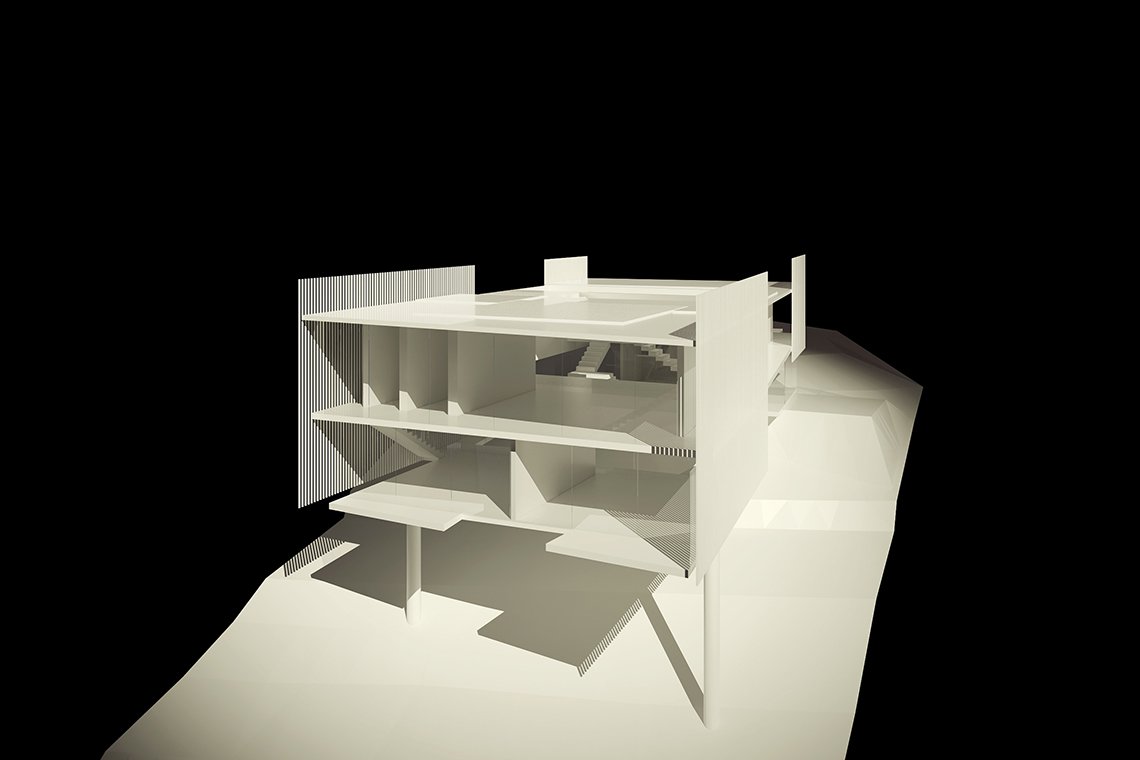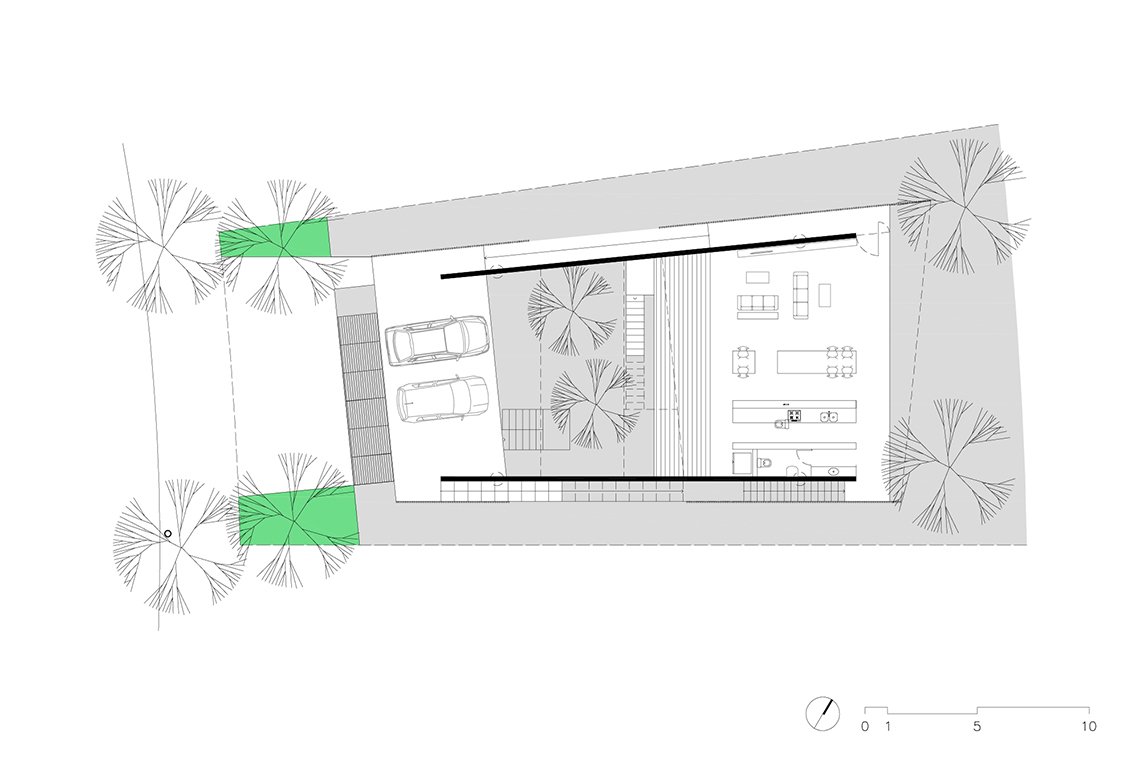Casa em Santana do Parnaíba
Tatiana Ozzetti
Nilton Suenaga
Victor Próspero
Beatriz Marques
Beatriz Brandt
STRUCTURAL SYSTEM
Reinforced concrete
MAJOR MATERIALS
Concrete, glass, steel
SITE AREA
573,31 m²
TOTAL FLOOR AREA
416,53 m²
HOUSE IN SANTANA DO PARNAÍBA, SP
Driving from São Paulo downtown for about one hour toward west one reaches the site where this house will be built. It is located in the outskirt of Santana do Parnaiba, a historical town. In a way the site could be described as in between different times, or in between the core of a twenty million people metropolis and a piece of its own past, as one feels if walking through the stone pavement streets surrounded by old buildings in that historical town. The archeological excavation in a city as Sao Paulo happens horizontally rather than vertically. Different times [or testimonies] here are not disposed in successive layers, but in a sequence of rings. Different times seem to coexist as to better balance existence.
However, the process of construction of a city like this also causes some permanent losses: millions of trees; thousands of birds etc. No matter how further one goes outside through those rings of time they will not be found and will never be recovered. How the lack of those dimensions has defined our urban culture, which seems to be shaped by both filling and eroding process? How much a replacement for one of those permanent losses can better balance our urban life? How a house and a tree, a city and a park and so on are related to each other: contrast, complementarity, balance? Why sometimes a view tends to be by far more important than the house?
This is the case of this spot that is located very close to the bottom of a valley, at the very border of a condominium. In such a way that from inside of that designed house one will just be able to see the woods on the other half of the valley, no sign of the city can be seen.
Inside this house some of those permanent losses which shaped our urban culture seemed to have been mitigate offering a better balance way to live inside as if very close to nature, as woods inside the living room.
That piece of forest was the reason for the choice of location, a reason we tried to keep in mind while designing this project.















